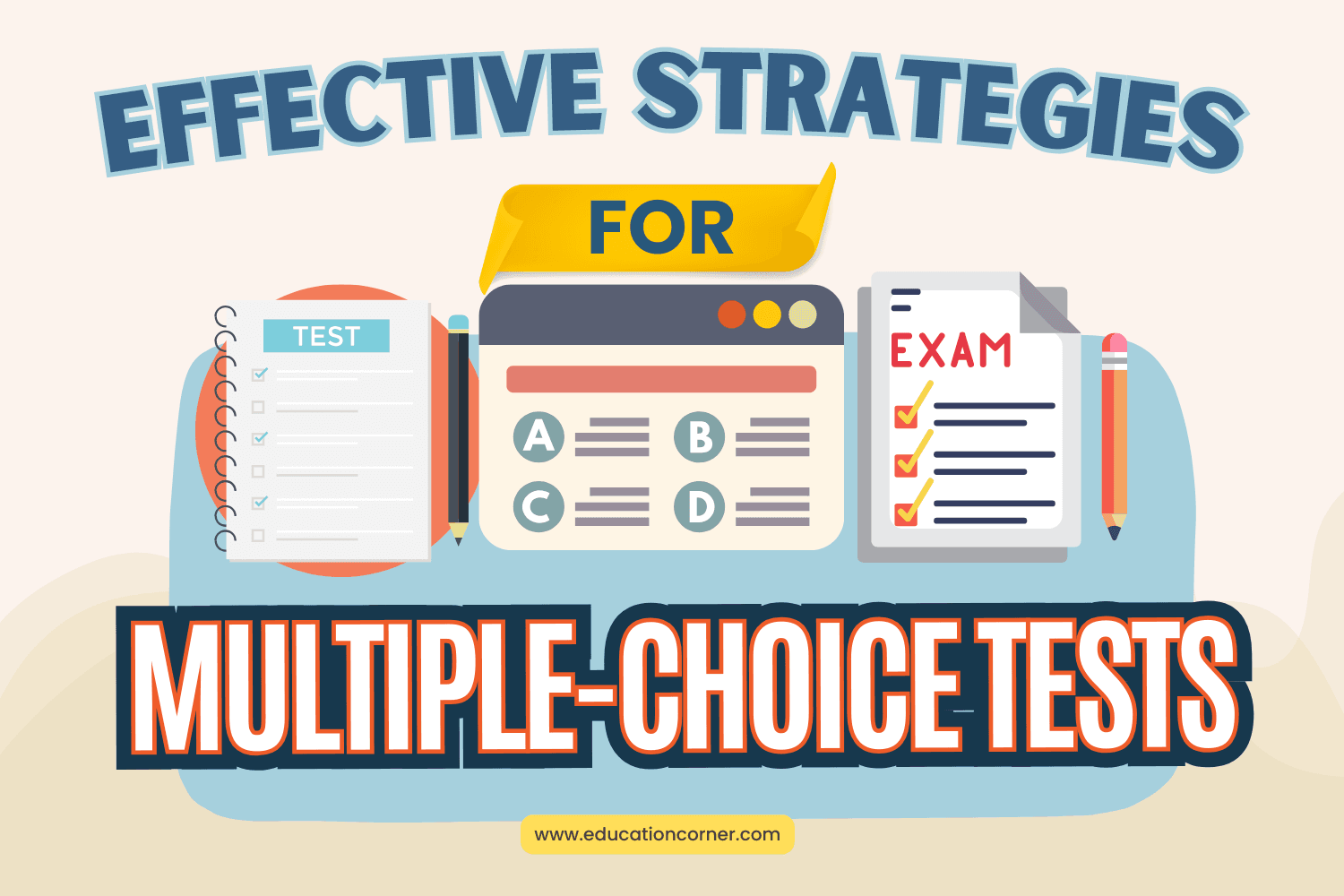College entrance exams, classroom tests, and most other examinations contain multiple-choice questions. Since you will no doubt encounter these types of questions on tests if you are preparing to enter college, learning some test taking strategies will be very beneficial.
Read the entire question
Read a multi-choice question in its entirety before glancing over the answer options. Students often think they know what a question is asking before reading it and jump straight to the most logical answer. This is a big mistake and can cost you dearly on multiple-choice exams. Read each question thoroughly before reviewing answer options.
Answer it in your mind first
After reading a question, answer it in your mind before reviewing the answer options. This will help prevent you from talking yourself out of the correct answer.
Eliminate wrong answers
Eliminate answer options which you’re 100 percent sure are incorrect before selecting the answer you believe is correct. Even when you believe you know the right answer, first eliminating those answers you know are incorrect will ensure your answer choice is the correct choice.
Use the process of elimination
Using the process of elimination, cross out all the answers you know are incorrect, then focus on the remaining answers. Not only does this strategy save time, it greatly increases your likelihood of selecting the correct answer.
Select the best answer
It’s important to select the best answer to the question being asked, not just an answer that seems correct. Often many answers will seem correct, but there is typically a best answer to the question that your professors is looking for.
Read every answer option
Read every answer option prior to choosing a final answer. This may seem like a no brainer to some, but it is a common mistake students make. As we pointed out in the previous section, there is usually a best answer to every multiple-choice question. If you quickly assume you know the correct answer, without first reading every answer option, you may end up not selecting the best answer.
Answer the questions you know first
If you’re having difficulty answering a question, move on and come back to tackle it once you’ve answered all the questions you know. Sometimes answering easier questions first can offer you insight into answering more challenging questions.
Make an educated guess
If it will not count against your score, make an educated guess for any question you’re unsure about. (Note: On some standardized tests incorrect answers are penalized. For example, a correct answer may be worth 2 points, an unanswered question 0 points, and an incorrect answer -1 points. On these tests, you can still make an educated guess, but only when you’re able to eliminate at least one or two incorrect answers.)
Pay attention to these words…
Pay particularly close attention to the words not, sometimes, always, and never. An answer that includes always must be irrefutable. If you can find a single counterexample, then the answer is not correct. The same holds true for the word never. If an answer option includes never a single counterexample will indicate the answer is not the correct.
It’s usually best to stick with your first choice–but not always
It is best to stick with the answer you first chose after reading the question. It is usually counterproductive to constantly second guess yourself and change your answer. However, this doesn’t mean your first answer choice is necessarily the correct answer choice.
While multiple choice tests aren’t usually intentionally designed to trick or confuse students, they are designed to test students’ knowledge and ability. To this end, the answer options provided will often include the most common wrong answer among the choices or answers that seem logical but are ultimately incorrect, or the best answer.
“All of the above” and “None of the above”
When you encounter “All of the above” and “None of the above” answer choices, do not select “All of the above” if you are pretty sure any one of the answers provided is incorrect. The same applies for “None of the above” if you are confident that at least one of the answer choices is true.
When there are seemingly two correct answers
When two answers are correct in a multiple choice question with an “All of the above” option, then it’s probably the correct choice.
Place your bet on the positive option
In most cases, a positive option is probably true if there is also a negative one.
The more information… the better
More often than not, the correct answer usually contains more information than the other options. This is good to know if you must guess.


This all seems too simple, nonetheless I tend to forget most of those test taking strategies when it’s time to take a test, I will print this article and keep it visible as a constant reminder.
When it comes to multiple choice test I think we all become a victim of thinking it is just common sense, but then it become easy to over think or over look some answers. Taking you time and process of elimination has always been my go to
Alway make sure you understand what the question is asking too. It can be a trick question where you might need to look for key word to make sure you pick the correct answer.
Understanding that all because it’s multiple choice it’s not easy. Read the question make sure you truly understand it , re read if you must and eliminate the ones that are completely ridiculous answers.